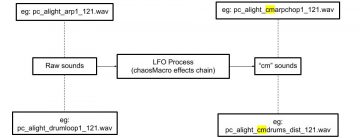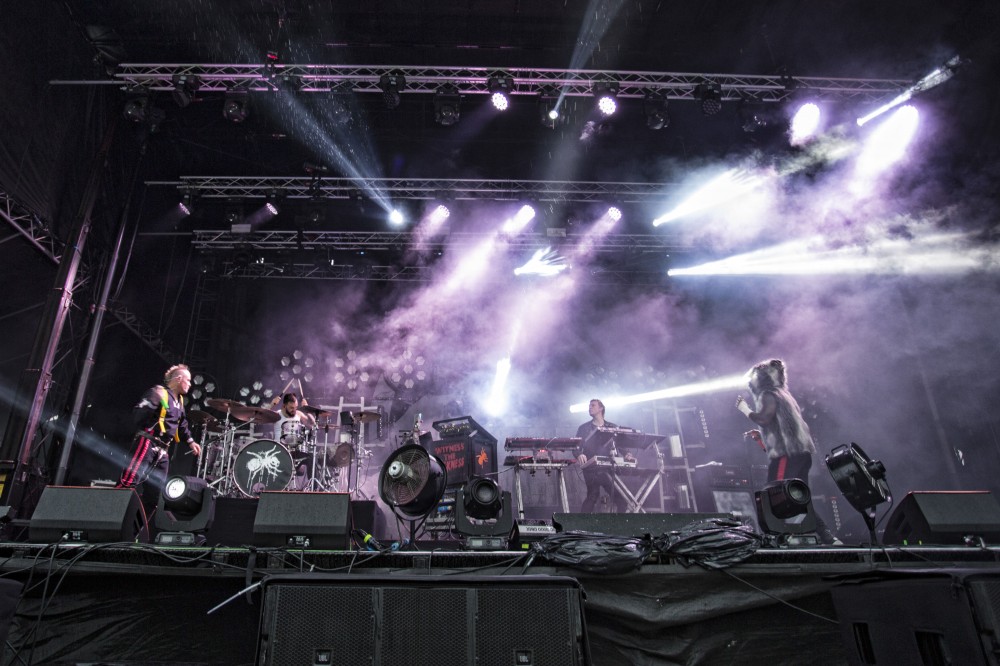
That Sound with Pat Carroll
That Sound is a series where we explore and share forward-thinking musical ideas from some of Australia’s most compelling electronic artists, producers and musicians. For the second feature (See LALKA’s here) of the series, producer Pat Carroll shares tips on resampling and processing sounds for percussion and effects with a downloadable sample pack of sounds from his recent release ‘Alight’ for you to experiment with.
He has a curious mind that’s always learning and consequentially carved a space into the landscape of contemporary electronic music. Pat Carroll is putting Australia on the map for a broadly European dominated electroacoustic sound his current PhD studies and attention-grabbing releases, Plateau, Conditions, Augur.
In this edition of That Sound, we enter Pat’s mind as he shares some of the intimate detail to how he made his most recent release, ’Alight’. It’s a bright and energetic song that showcases Pat’s more playful end of his production. It takes you on a journey with its spirited blend of drum and synth patterns mixed with vocal stabs.
– When did you start making this EP and what’s the idea behind the ‘Alight’?
I started writing the EP around October 2019. Summer was just starting, so I was feeling pretty upbeat and energetic which I reckon definitely influenced the mood of the EP. For Alight, I wanted to grow the track from variations of a simple arpeggio. I wanted the arpeggio to carry the track, but with a heavy and detailed percussion line to fit it for the dance floor.
– How would you define your sound?
It’s dance music (or at least groove-based music), but with a focus on growth, evolution and variation. For the harder tracks like this, the percussion is fairly glitchy with a bit of grit to it, and the harmony often has a cinematic feel.
A big feature of my music is the use of heavily processed sounds that are used as percussion sounds and sound effects that compliment main melodic lines and/or act to fill the background space. I’d say this is inspired by the compositional techniques of acousmatic music.
– What is the story behind your song, Alight?
Alight is based around a fairly simple arpeggio that changes throughout the track.
I first wrote that for the entire structure, which was actually based on a pop-music structure (Intro, A, B, A, B, C, B, outro), wrote a simple bass line to follow the chords of the arpeggio, and then built all the percussion around these lines. I wrote the arp line by beginning with a very simple chord progression, then placed an arpeggiator and a random MIDI device, and automated different parameters of these for each section of the entire track.
By starting with the main elements as opposed to the drums, I was able to avoid having to try to squish the main element into a sonic bed that was already filled with loads of elements. The arp had its own space, and I just had to fill in the areas around it.
Because of the nature of the arp, I wrote a more breaks-based beat using a bunch of different percussion sources. After I had a basic percussion line down, I processed the percussion in pretty drastic ways, resampled it, and chopped out the best bits as either individual hits or background effects (‘ear candy’).
Once I had the Melody, Bass and Percussion down, it was then a matter of making all the subtle effects throughout the track.
So while the arpeggio was written first and clearly leads the track forward, most of the fun, technical stuff was in making the percussion and effects. I then listened to it after a week off, and making structural changes where sections needed to be shortened or extended, as well as some small tweaks to the mix.
– What was the thought process behind resampling and processing sounds for percussion and effects in ‘Alight’ in the song?
In certain studio techniques, especially modular synthesis, there is this idea of ‘happy accidents’ – accidentally stumbling upon a sweet spot of synthesiser or effects parameters that produce a great sound. Most commonly, the artist isn’t looking for a specific sound, they’re just experimenting with technologies and recording the outputs to capture something.
I came up with the idea of making a set of effects chains that are almost like happy accident generators. It’s a pretty simple concept of randomising loads of parameters of multiple effects, rhythmically synced to the sequencer, while running a sound through it and recording the output. This process gives me the ability to turn pretty basic sounds into something way more interesting, as well as create new sounds from pre-existing sounds already in a track, and layer those together to create some cohesive variation or growth (as opposed to just bringing in entirely new sounds).
So for Alight, I chopped up a loop I had downloaded from Splice and reorganised it into a breaks-style beat, layered 2 kicks under it and added a hat loop I had sampled from a disco record. I then ran these through a couple of my chaosMacro chains (instructions how to build this below), recorded the output, chopped out nice sounds and added them to the percussion group.
I did the same process on other instrument groups and even the master channel, recorded the outputs and chopped out interesting bits. Other than percussive sounds, I used them as fills (00:46 and 04:37), as well as spatial effects (heard in the background at 01:12). I also performed this process on melodic elements to create some spatial effects from those.
Step-By-Step Guide
1. Load 8x Max For Live LFOs from the Max For Live Essentials Collection into a blank audio effect rack.
2. Map each of the LFO parameters to the macros of the audio effect rack.

3. Group this into another audio effect rack, rename it ‘chaosMacro’ and map each LFO to one of the macros of this new audio effect rack. See the image below: each LFO is controlling one of the macros on the far left.
Note – I recommend saving this chain into your library so that you don’t have to remake it every time you make a new chain.

4. Load an effect into the chaosMarco group (not in the LFO set group)
– Echo, Reverb, Pedal, Drumbuss all work great, but definitely try out any effect!
5. Right-click on parameters and assign them to the macros that are being controlled by the LFOs.
Note – it’s best to do this while playing sound through it so that you can hear if a certain parameter is making noises that is too ridiculous to use!

6. Repeat steps d. and e. for another effect.
– Save this chain
7. Play a sound through and record the output.
8. Chop out interesting parts and use for:
– One-shots
– Loops
– Longer FX lines

A tip that dives a bit deeper – if you’re using a time-based effect, try putting a utility at the very start of the chain, and mute and unmute the incoming audio. Sometimes you get really cool results when there is no incoming audio, but the echo/reverb is making all kinds of interesting sounds with the audio it has stored and is feeding back.
In the sample pack from Pat Carroll, there are Raw (Dry) and Processed (FX) based samples. The raw samples are the samples you can use to process. The FX-based samples are examples of what the raw samples could sound like once processed with Pat’s step-by-step instruction. This offers you the opportunity to re-create some of the different ideas Pat Carroll has created.


